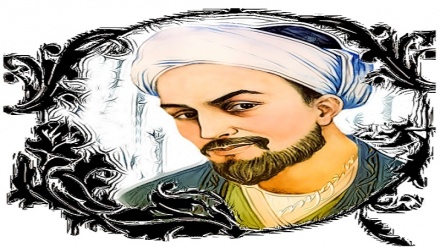Iranian Notables, Sources of Global Honor (92)
The tomb of the great Iranian mystic of 8th Century AH, Mir Seyed Ali Hamedani, is one of the religious sites of Tajikistan, which maintains a distinguished status among the Muslims of that country.
Today, we introduce this tomb, while also elaborating on this religious figure’s role in formation of social unity among Sunni and Shia Muslims.
Born in the city of Hamedan in the year 714 AH, Hamedani completed his preliminary studies in his hometown, while later attending the classes of prominent lecturers to learn the science of hadith, philosophy, and mysticism. Under the influence of his prominent lecturers, he made utmost efforts for purification of soul and attainment of spiritual growth. Later on, he was instructed by his lecturers to promote the sacred religion of Islam, overseas. He continued this mission for the rest of his life, while also grooming countless students. He was highly respected by people, from all walks of life, in the majorities of cities in Iran, Central Asia, and India. In addition to piety, he highly excelled in science and philosophy, and mastered the traditional and rational sciences of his era. Following his demise, his children and grandchildren continued his activities in Hamedan, Kashmir, Balkh, and other regions, and made every effort to guide people to the righteous path.
The tomb of this great Iranian mystic of 8th Century AH is one of the religious sites of Tajikistan, which maintains a unique and distinguished status among the Muslims of that country. Although the majority of Muslims in that country are Sunnis, the presence of this tomb in Tajikistan and the positive aspects and benefits of that religious figure in his lifetime and in the present time for the Tajik people, has led to pilgrimage of this tomb by many people, who head for this religious site from different parts of Tajikistan and Iran. This development has highly contributed to establishment of a bond between Sunnis and Shias of Tajikistan and Iran. Today, in addition to introduction of this religious site, we study the role of this religious figure in formation of social unity among Sunni and Shia Muslims.
Sites of pilgrimage are considered as part of the cultural and social elements of an ethnicity and/or nation. These elements, in addition to maintenance of social functions, especially contribute to the cultural behavioral patterns and cultural exchanges among different ethnicities.
The city of Kulob is one of the ancient cities of Tajikistan, which dates back to more than 2700 years ago. Kulob is the fourth largest city of Tajikistan, which is situated 230 kilometers south of the Tajik Capital, Dushanbe, sharing borders with Afghanistan. Hamedani’s tomb is situated in the main street of the city of Kulob, within an opulent orchard. Hamedani’s tomb was in fact a mosque and school which he had constructed in the city of Kulob. Based on his will, his body was transferred to this site and laid to rest over there. Thereafter, every year on 6th of the Islamic month of Zi-Hajjeh, which marks the anniversary of Hamedani’s demise, memorial services are held for Hamedani in Kashmir and other predominantly Muslim regions of the Indian Subcontinent; throughout which the virtues and teachings of this great mystic are pointed out.
Hamedani’s tomb has captured the attention of Tajik people for a long while, especially after the collapse of former Soviet Union. The residents of Khatlon Province, especially the residents of Kulob, strongly believe in the virtues of Mir Seyed Ali Hamedani, while many people from different parts of the world pay pilgrimage to his tomb.
A number of studies have been carried out in Kulob, which has resulted in interesting findings. The researchers have discovered that Hamedani’s tomb has a highly important status among the people of this city and its surrounding regions. For instance, youths of this region start their married life by paying pilgrimage to this tomb.
Meanwhile, it is important to point out that all of the residents of the city of Kulob and its surrounding villages are Muslims, while all of the local women wear Hijab.
The sites of pilgrimage maintain a variety of functions in the community, such as religious, historical, artistic, psychological, political, social, cultural, and economic ones.
Today, the performance of religious ceremonies next to Hamedani’s tomb clearly manifests the religious function of this site of pilgrimage. It can be said that pilgrimage of this religious site has become an integral part of Tajik culture, customs, and traditions, highly resembling the cultural ceremonies which are held in Islamic Iran’s religious sites.
MR/ME


